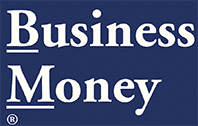Regulation vs. innovation in vaping: How shifting laws are reshaping strategy in 2025
Vaping has evolved from a niche subculture into a multibillion-dollar industry. In the past decade, rapid product development and aggressive marketing fueled growth, especially among younger consumers. But in 2025, the game has changed. New global and national regulations are rewriting the rules of engagement, and companies are scrambling to adapt.
For businesses invested in vaping, the challenge is twofold: complying with tightening laws while staying competitive in a market that prizes novelty. From product formulation to distribution, every step is under scrutiny. How firms respond now may determine who survives the next regulatory wave.
In the U.S., the Food and Drug Administration (FDA) has intensified its crackdown on flavored vaping products. Several states have enacted their own bans, going beyond federal requirements. This has led to a wave of reformulations, as companies shift from fruity and sweet profiles to more neutral or tobacco-like options.
Evolving global regulatory pressures
Outside the U.S., the European Union’s Tobacco Products Directive (TPD) is undergoing a significant overhaul, adding new barriers to product approval. Meanwhile, countries like Canada and Australia are reevaluating their harm-reduction strategies. While some regulators push for bans, others recognize the role vaping may play in reducing cigarette use. This regulatory patchwork forces multinational firms to customize offerings by region, complicating supply chains but also revealing untapped market potential. As a result, demand has surged for diverse vape flavors from category-specific suppliers, driving innovation behind the scenes.
Compliance is driving product development
The pressure to comply with changing rules is influencing how companies approach product design. Innovation has become more intentional. Rather than chasing flashy trends, brands are focusing on long-term viability. This includes investing in leak-proof cartridges, tamper-resistant packaging, and formulations with traceable ingredients.
Temperature control features, battery safety enhancements, and child-resistant features are becoming standard. These aren’t just consumer perks—they’re now prerequisites for market entry. Some brands are even working with regulatory consultants during the R&D phase to avoid costly recalls or rejections later on.
The shift toward compliance-driven innovation is changing company cultures. Startups, once known for risk-taking, are hiring regulatory affairs specialists and rethinking their MVP timelines, and in this climate, getting to market fast matters less than getting to market clean.
Marketing strategies must adapt
The days of colorful packaging and festival sponsorships are over. Marketing teams must now walk a fine line between visibility and compliance. Adult smokers remain the primary legal demographic, but reaching them requires precision.
Instead of mass-market advertising, brands are moving toward relationship-based outreach. Retail partnerships and in-store sampling allow brands to build trust where it counts. Some are experimenting with QR codes and informational campaigns that highlight product ingredients and certifications.
Regulations are also affecting branding. Vague flavor names and non-descript packaging are now standard. The goal is to de-emphasize appeal to youth without sacrificing consumer clarity. It’s a delicate balance that requires testing and frequent iteration.
Supply chains and retail are under pressure
Retailers are becoming compliance gatekeepers. E-commerce platforms have revamped their backend systems to accommodate ID verification and limit geographic distribution based on local laws. Brick-and-mortar stores face zoning challenges and must comply with display limitations.
To survive, some shops are diversifying their inventory and integrating vape products alongside general wellness items or smoking cessation aids. Others are adopting kiosk models to lower overhead and maintain flexibility. Either way, adaptability is key.
Distributors, too, are feeling the squeeze. Logistic delays due to new import/export rules are forcing companies to shorten supply chains or find regional partners. Transparency, traceability, and regulatory documentation are now essential to doing business.
Investors prioritize regulation-ready brands
All this complexity hasn’t scared away investors—it’s just changed the rules of the game. Rather than chasing hype, capital is flowing into companies that demonstrate foresight, compliance readiness, and operational discipline. Due diligence now includes regulatory audits and supply chain reviews.
Mergers and acquisitions are picking up. Larger firms are buying up smaller, compliant brands to expand their portfolios and accelerate go-to-market timelines. These acquisitions often target regional specialists who understand specific legal environments.
Some firms are even seeking partnerships with health organizations. While controversial, these alliances offer credibility and help shape policy discussions. In a sector often viewed with skepticism, alignment with health priorities can be a game-changer.
Building a smarter, more sustainable market
As with any regulated industry, adaptation is the price of longevity. Businesses that treat compliance as a competitive advantage, not a constraint, are already pulling ahead. The vaping market in 2025 is less about exploiting loopholes and more about sustainable innovation.
The regulatory pressures reshaping vaping today mirror what occurred in cannabis, alcohol, and even fintech in years past. The lesson is clear: markets favor those who anticipate change and build it into their strategy—those who don’t risk irrelevance.
This year marks a turning point, not a dead end. For firms willing to rethink product pipelines, marketing ethics, and global operations, there’s still plenty of room to grow. The future of vaping belongs to companies that see regulation not as a wall, but as a blueprint.

